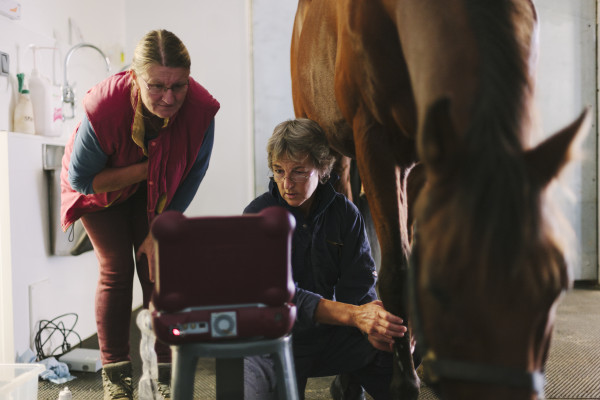New treatment for tough joint infections
- May 26, 2021
- ⎯ Kimberly S. Brown
You might not notice a small puncture wound near your horse’s joint. However, that small wound can allow bacteria entrance into the joint capsule, setting up an infection that could be long and costly to treat, possibly cause life-long arthritis, and could even end your horse’s life. Part of the problem is that those bacteria could join forces with other bacteria or microorganisms to form a biofilm that makes treating the infection even harder.

A biofilm forms “when certain microorganisms (for example, some types of bacteria) adhere to the surface of some object in a moist environment and begin to reproduce. The microorganisms form an attachment to the surface of the object by secreting a slimy, glue-like substance,” noted information from Montana State University.
Biofilms can contain one or types of microorganisms, and that slimy, glue-like substance can act like a shield to keep the microorganisms safe. Some biofilms are good, like the ones that line the intestinal tract, and some biofilms shelter microorganisms such as bacteria that cause problems in joints.
The standard treatments used for equine joint infections can be prolonged and expensive. Even despite aggressive care, six to 10% of affected horses die or are euthanized as a result of the joint infection or associated complications. For horses that survive, research has shown that more than 50% will suffer from chronic arthritis for the rest of their lives.
Dr. Lauren Schnabel and Dr. Jessica Gilbertie of North Carolina State University teamed up to look at how to treat these difficult joint infections using a modified platelet-rich plasma (PRP). Schnabel and Gilbertie had used platelet-rich plasma to treat other orthopedic injuries in horses, and they knew there was evidence that platelets could help combat infections.
What they discovered in their research was that “All PRP formulations displayed antimicrobial properties; however, formulations containing higher concentrations of platelets without leukocytes had increased antimicrobial activity.”
Overall, the PRP‐L product they researched in combination with amikacin worked well against biofilm.
“In conclusion, the use of PRP‐L has the potential to augment current antimicrobial treatment regimens, which could lead to a decrease in morbidity and mortality associated with infectious arthritis.”
Schnabel added, “A huge thank you to Morris Animal Foundation and all of their generous donors for their continued support of our efforts and allowing us to help horses.”





